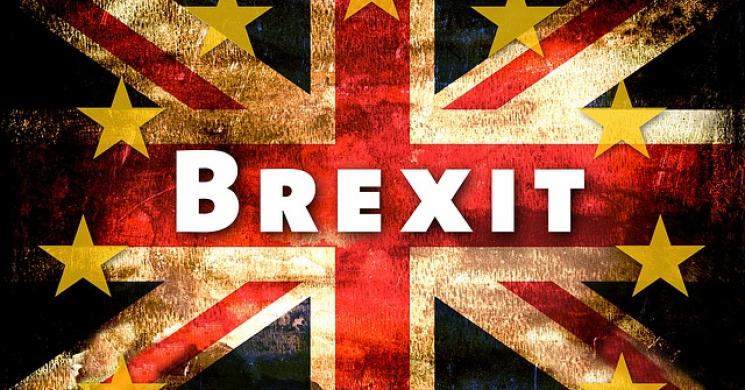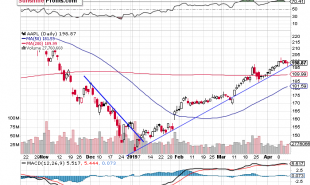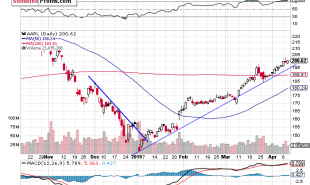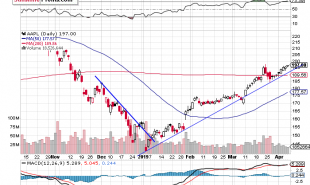
Commentary courtesy of Zerohedge
Early on Monday, UK Prime Minister Theresa May scrambled to contain a crisis in her government after her chief Brexit negotiator quit, quickly replacing him with a young euroskeptic and insisted she would press ahead with her vision for the divorce. As reported earlier, May appointed Dominic Raab, 44, as Brexit Secretary after David Davis resigned late on Sunday in protest over her plans to maintain close ties to the European Union after the split.
However, the appointment has hardly helped cleared up the confusion over what the sudden resignation of the old Brexit guard means for the process going forward, and specifically for May's cabinet in the near term, with some speculating that the removal of Davis means smooth sailing for a "soft Brexit" plan, and thus pound positive, while others claim that the growing chaos in May's cabinet threatens the Prime Minister's position and could result in a leadership change in the coming days.
Courtesy of ING's James Knightley and James Smith, we look at what the recent shuffle means and lay out the possible net scenarios.
PM May's new plan
After all the build-up, last Friday UK Prime Minister Theresa May managed to persuade ministers to rally around a new plan for Brexit. Crucially, the agreement means that the UK will abide by a "common rulebook for all goods" - in other words, the single market for goods/agriculture. The government will also press for a "facilitated customs arrangement". Here the UK could apply different tariffs to the EU, in theory enabling it to pursue trade deals outside of the EU. Where tariff rates differ, the UK would collect fees on the EU's behalf.
But there's still a big question of whether the EU will accept this. Here are our thoughts on what could happen next:
1. Will the EU accept the UK’s vision presented on Friday?
Not in its current form - There are three reasons why the EU is likely to reject the UK’s proposal.
Firstly, on the “facilitated customs arrangement”, the EU will likely view this as unworkable (practical issues of UK collecting potentially higher EU tariffs), legally-challenging (there are concerns it could encourage smuggling) and politically unacceptable (the thought of a third country collecting EU tariffs is reportedly unpopular in Brussels).
The second reason is the UK's proposal to remain in the single market for goods and agricultural still fundamentally amounts to 'cherrypicking'. The EU is worried that other countries could seek similar concessions should the UK be handed a deal that allows it to flourish. While some on the UK side point to the Swiss deal as a clear example of a country being in the single market for goods only, it's said the EU views that Swiss agreement as a mistake.
Finally, the EU is unlikely to accept that the UK has given enough ground on “the price” of single market access – that’s budget contributions, freedom of movement and ECJ oversight. The UK plan officially says that all of these would “end”.
Admittedly on the ECJ point, it looks like the UK may be more open to a fudge. This could potentially take the form of the EFTA court (involving EU, UK and third country judges agreeing on rulings), which is similar to what is employed in the EEA. But aside from saying a new “mobility framework” will be set-up to facilitate work/study visas, there was little talk on the other two points.
So the EU will almost certainly say no, but Brussels may seek to strike a balance when communicating this. A UK government breakdown is not in the EU’s interest, so it will be wary not to completely destroy the fragile cabinet truce and risk May’s position as PM, just as she is pushing in a “softer” direction.
2 Will there be a Conservative leadership challenge?
In the aftermath of Friday's meeting, Brexit Secretary David Davis has resigned, raising some uncertainty over how long that Cabinet truce on the agreement can survive. However, according to press reports, this has been in the offing for quite a while. As he implied in his resignation letter, Davis has not been happy with Number 10's strategy and has been increasingly sidelined by Theresa May's Europe Advisor, Olly Robbins.
Whether other key Brexiteers will eventually follow is unclear. Foreign Secretary Boris Johnson was not pleased with what was agreed on Friday, but there is a sense that his support amongst Conservative MPs has been waning, particularly after derogatory comments about British business were made public. So even if he does quit, while immensely damaging, it may not be a fatal blow for May.
However, we need to watch Jacob Rees Mogg and his fellow pro-Brexit MP colleagues who according to some reports are threatening to gather enough signatures to trigger a vote of no confidence and a leadership challenge. 48 signatures are required, and the press have been reporting for a while that around 40 are already secured. This morning Rees-Mogg retweeted a snap poll of Conservative Party members suggesting 60% think the Chequers plan is “a bad deal”. He subsequently tweeted “no deal is better than a bad deal”.
If a Tory leadership challenge is initiated, it’s not guaranteed that May would lose. David Davis said this morning that Theresa May is a “good PM” and will stay – a leadership contest is “the wrong thing to do… I won’t throw my hat in the ring”. Many other senior MPs will be rallying around her. But if she was to lose, bookmakers suggest that Michael Gove (a key Brexit supporter) is the favourite to come out the winner. Betting company PaddyPower have odds of 4/1 that he will be the next Prime Minister with current Home Secretary Sajid Javid at 6/1 versus Jacob Rees Mogg at 7/1.
Gove's stance on Brexit seems to be very similar to that of May. On BBC television yesterday he issued a rallying cry for MPs to unite behind May’s plan, and it looks like he is trying to be the bridge between the two Brexit factions. Javid has said very little on his Brexit vision, while Rees-Moggs would be that of a short sharp Brexit with no vestiges of EU control over the UK.
If Theresa May goes, a second election looks unlikely. Two-thirds of MPs would need to vote in favour of it, but while the Conservative party rebels may be willing to vote against the government in parliament, they aren’t prepared to vote for a new election. A Survation poll in today’s Daily Mail has Labour on 40%, the Conservatives on 38% and if repeated at the election then a very different Brexit could emerge to what Tory Brexiteers want.
A second referendum on Brexit also still seems unlikely – not least because there’s no obvious “leader” or a united party looking for this. At PaddyPower the odds of another referendum before April 2019 are 5/1. In terms of support for Brexit, the UK is becoming more divided by age. Support for Brexit is rising in the over 65s (Survation suggested it is now at 65% for the over 65s versus 60% at the time of the referendum). Conversely, those under 45 are increasingly anti-Brexit. You Gov suggests that nationally there has been a slight shift towards remain, but not enough to clearly say the UK would likely change its mind.
3. So assuming the EU says “no”, what happens next?
Assuming May clings on, then the big question is how the UK’s position will evolve.
We suspect it is probably only a matter of time before the UK accepts that it will stay in a customs union in full after Brexit (the “facilitated customs arrangement” agreed on Friday is halfway there). The UK may also ultimately water down its red lines on budget payments, the ECJ and migration. The EU knows these issues are politically troublesome in the UK, so it may perhaps be willing to help the government in the communication/spin – for instance, one suggestion we’ve heard is that the UK could make payments under the guise of aid/development funds.
So if the UK was proposing a customs union, the single market for goods, and some ground on these other issues, then it will be very interesting to see how the EU reacts. So far in the Brexit process, the EU has been very united. However, this would arguably represent the UK’s first serious and workable option put on the table. Some EU countries, particularly those that trade heavily in goods with the UK, may be more tempted to go for it – although Germany and France would still likely be resistant.
4. If it's still a "no" from the EU, "no deal" risk would rise
If the EU were to reject a revised UK proposal on the single market for goods and customs union membership, then we think there are two very different directions.
The first and probably more likely scenario is that the UK inches closer to the Norway-model (at least for a long transitional period), possibly by accepting full single market access. However, the obvious issue is that this would most likely require freedom of movement - perhaps the reddest of red lines for the UK government. Admittedly public opinion has softened on immigration since the Brexit vote two years ago - only around 30% of people put it in their top three issues, versus over 50% at the time of the referendum. But even so, this is unlikely to make this option any more politically palatable for the Conservative party.
Trending Articles
Grand Bargain Taking Shape? U.S. To Pull Out Of Al-Tanf
If you’ve followed my work for the past year you know that my default position has been there is a potential Grand…
If the government can't agree on a way forward, then a second scenario could arise where negotiations grind to a halt and talk of "no deal" rises.
The EU reportedly believes that the UK government isn't serious about a "no deal", given that no new customs staff have been hired and no obvious preparations have been made for the event of exiting without an agreement. Certainly, it could be damaging economically. The British Freight Transport Association has said that there could be up to 29-mile queues back from Dover if additional border checks were to take just four minutes (in reality it could take much longer). There would likely be similar congestion at major EU ports.
Given these concerns, we suspect it's unlikely the UK government will ultimately walk away from talks. That said, if no obvious progress were to be made as we move into the winter, then the perceived risk of a "no deal" could rise, creating sharply higher uncertainty for companies and markets.
5. The October deadline could easily slip
Officially, the EU and UK are still working towards securing the withdrawal agreement and a political declaration on the aims of future trade talks by October. But this looks increasingly likely to slip until December, which would mean a much reduced period of time for parliament and EU governments to ratify what has been agreed. A last-minute “fudge” to enable the transition period to begin cannot be fully ruled out.
This scenario is looking increasingly likely to us given growing concern across Europe that anti-EU parties could perform very strongly at the May 2019 European parliamentary elections. It is not inconceivable that the biggest voting block in the EU parliament turns out to be anti-EU. As such we consider it doubtful that the EU will shift significantly from its current position ahead of those elections. Offering something to the UK government that could be construed as a "win" may be perceived as providing a boost to anti-EU parties elsewhere. However, once the elections are out of the way progress on Brexit could pick-up momentum.
* * *
Finally, here are the possible scenarios for Brexit talks over coming months







